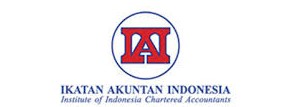Pengaruh Sosial dan Nilai Harga terhadap Behavioral Intention to Use QRIS serta dampaknya pada Use Behavior: Studi Empiris pada UMKM Sektor Kuliner Kota Pekanbaru
Abstract
The presence of QRIS payment technology in the digitalization era shows that there is a level of technology adoption that originates from the intensity of behavior of MSME players as users of digital payment services. The aim of this research is to explore the role of social influence and price values on interest in using QRIS for MSMEs in the Culinary Sector in Pekanbaru City. This research uses quantitative descriptive methods. Empirical data was collected through questionnaires from 340 respondents who are MSME owners. Analyzed using SmartPLS 4.0 based on the SEM-PLS method. The research results concluded that social influence and price value influenced behavioral intentions to use QRIS, then behavioral intentions to use QRIS influenced usage behavior. Therefore, this study is consistent with the efforts of the government and Bank Indonesia to accelerate the implementation of digital payments in the development of the MSME digitalization program.
References
Anshori, A. and Anwari, M.K. (2022) ‘Model Penerimaan Teknologi ( TAM ) Terhadap Intensi Menggunakan’, Jurnal Produktivitas, 9, pp. 236–241.
Arenas-Gaitán, J., Peral-Peral, B. and Ramón-Jerónimo, M.A. (2015) ‘Elderly and internet banking: An application of UTAUT2’, Journal of Internet Banking and Commerce, 20(1), pp. 1–23.
Auliya, P.N. and Arransyah, M.F. (2023) ‘Penerapan Model UTAUT untuk Mengetahui Minat Perilaku Konsumen dalam Penggunaan QRIS’, Ekonomi, Keuangan, Investasi dan Syariah (EKUITAS), 4(3), pp. 885–892.
Baptista, G. and Oliveira, T. (2017) ‘Why so serious? Gamification impact in the acceptance of mobile banking services’, Internet Research, 27(1), pp. 118–139.
Bharata, W. and Widyaningrum, P.W. (2017) ‘Analisis Penerimaan Dan Penggunaan Sistem Informasi Akademik Melalui Pengembangan Model Utaut Studi Pada Mahasiswa Fakultas Ekonomi Universitas Muhammadiyah Ponorogo’, Optimal: Jurnal Ekonomi dan Kewirausahaan, 11(2), pp. 171–187.
Butarbutar, N. et al. (2022) ‘Behavioral Intention Constituent Analysis of QRIS Digital Payment Tools in MSMEs in Pematangsiantar City’, Ideas: Jurnal Pendidikan, Sosial, dan Budaya, 8(4), p. 1537.
Chaveesuk, S. and Piyawat, N. (2021) ‘Use of QR code technology in eastern Thailand: entrepreneur perspective’, Utopía y Praxis Latinoamericana, 26(2), pp. 76–88.
Cunningham, N. (2023) ‘The role of social group influences when intending to purchase premium alcohol’, Cogent Business and Management, 10(1).
Chaveesuk, S. and Piyawat, N. (2021) ‘Use of QR code technology in eastern Thailand: entrepreneur perspective’, Utopía y Praxis Latinoamericana, 26(2), pp. 76–88.
Cunningham, N. (2023) ‘The role of social group influences when intending to purchase premium alcohol’, Cogent Business and Management, 10(1). Available at: https://doi.org/10.1080/23311975.2023.2174093.
Daneji, A.A., Ayub, A.F.M. and Khambari, M.N.M. (2019) ‘The effects of perceived confirmation and satisfaction on continuance intention in using massive open online course (MOOC)’, Knowledge Management and E-Learning, 11(2), pp. 201–214.
Dwivedi, Y.K. et al. (2019) ‘Re-examining the Unified Theory of Acceptance and Use of Technology (UTAUT): Towards a Revised Theoretical Model’, Information Systems Frontiers, 21(3), pp. 719–734.
Febriani, N.K.D., Utami, N.W. and ... (2023) ‘Analisis Behavioral Intention dan Use Behavior Quick Response Code Indonesian Standard (QRIS) Pada UMKM Dengan Metode UTAUT 2 di Kota Denpasar’, Jurnal Ilmiah Teknologi, 17(1), pp. 67–82.
Ghozali, I. and Latan, H. (2020) ‘Partial Least Squares: Konsep, Teknik dan Aplikasi Menggunakan SmartPLS 3.0 Untuk Penelitian Empiris (Vol. 2)’,
Güdel, K., Heitzmann, A. and Müller, A. (2019) ‘Self-efficacy and (vocational) interest in technology and design: an empirical study in seventh and eighth-grade classrooms’, International Journal of Technology and Design Education, 29(5), pp. 1053–1081.
Hidayat, Muhammad Taufik, Qurrotul Aini, and Elvi Festrina, 2020 ‘Penerimaan Pengguna E-Wallet menggunakan UTAUT2 (Studi Kasus)’ Jurnal Nasional Elektro dan Teknologi Informasi 9(3) :239-47.
Huang, C.Y. and Kao, Y.S. (2015) ‘UTAUT2 Based Predictions of Factors Influencing the Technology Acceptance of Phablets by DNP’, Mathematical Problems in Engineering, 2015.
https://www.bi.go.id/id/fungsi-utama/sistem-pembayaran/blueprint-2025/default. . “ SISTEM PEMBAYARAN INDONESIA 2025”
Accessed on date October 7,2023.
https://www.bi.go.id/id/publikasi/ruang-media/cerita-bi/Pages/cara-membuat-qris.aspx “CARA MEMBUAT QRIS ALL PAYMENT UNTUK USAHA”.
Accessed on date October 7, 2023.
https://www.bi.go.id/QRIS/default. “QRIS.”
Accessed on date October 5, 2023.
https://www.Databoks.katadata.co.id. “Transaksi Digital Banking di Indonesia Tumbuh 158% dalam 5 Tahun Terakhir” EKONOMI & MAKRO”.
Accessed on date August 13, 2023.
https://belitung.tribunnews.com/2023/02/16/pemerintah-ajak-pelaku-umkm-gaungkan-pembayaran-digital-dinilai-praktis-dan-efisien. “Pemerintah Ajak Pelaku UMKM Gaungkan Pembayaran Digital, Dinilai Praktis dan Efisien”
Accessed on date February 24, 2024.
https://sumatra.bisnis.com/read/20220821//bank-indonesia-bidik-358000-pengguna-baru-qris-di-provinsi. “ Bank Indonesia Bidik 358.000 Pengguna Baru QRIS di Provinsi Riau. Bank Indonesia Bidik 358.000 Pengguna Baru QRIS di Provinsi Riau.”
Accessed on date October 7, 2023.
https://riaupos.jawapos.com/ekonomi-bisnis/21/08/2023/308504/bi-riau-gelar-pekan-qris-nasional, “BI Riau Gelar Pekan QRIS Nasional”
Accessed on date October 7, 2023.
https://www.ojk.go.id/id/berita-dan-kegiatan/siaran-pers/Pages/Survei-Nasional-Literasi-dan--Keuangan-Tahun-2022. “Siaran Pers: Survei Nasional Literasi dan Inklusi Keuangan Tahun 2022.”
Accessed on date October 7, 2023.
https://malangposcomedia.id/dorong-qris-di-pasar-rakyat-kota-malang“
Dorong QRIS di Pasar Rakyat Kota Malang “
Accessed on date November 21, 2023.
https://bisnis.solopos.com/maksimalkan-penggunaan-qris-pengamat-ekonomi-ums-sarankan-beberapa-hal-ini. “Maksimalkan Penggunaan QRIS, Pengamat Ekonomi UMS Sarankan Beberapa Hal Ini, SoloPos.”
Accessed on date February 24, 2024.
https://www.detik.com/sumut/berita/d-6584966/sihar-sitorus-dorong-percepatan-penggunaan-qris-di-wilayah-danau-toba. “Sihar Sitorus Dorong Percepatan Penggunaan QRIS di Wilayah Danau Toba”
Accessed on date February 24, 2024.
https://soloraya.solopos.com/pengguna-qris-di-wonogiri-masih-rendah-pemkab-bakal-gencarkan-sosialiasi. “Pengguna QRIS di Wonogiri Masih Rendah, Pemkab bakal Gencarkan Sosialiasi”.
Accessed on date February 24, 2024.
Kadim, A. and Sunardi, N. (2021) ‘Financial Management System (QRIS) based on UTAUT Model Approach in Jabodetabek’, International Journal of Artificial Intelligence Research, 6(1).
Kongarchapatara, B. (2018) ‘Factors Affecting Adoption versus Behavioral Intention to Use QR Code Payment Application Factors Affecting Adoption versus Behavioral Intention to Use QR Code Payment Application Boonying Kongarchapatara * and Chalida Rodjanatara College of Management ’, 2018 International Conference on e-Commerce, e-Administration, e-Society, e-Education, and e-Technology.
Kucukusta, D. et al. (2015) ‘Re-examining perceived usefulness and ease of use in online booking. International Journal of Contemporary Hospitality Management, 27(2): 185–198.’, The Eletronic Library, 27(2), pp. 185–198.
Lee, S. and Choeh, J.Y. (2020) ‘Using the social influence of electronic word-of-mouth for predicting product sales: The moderating effect of review or reviewer helpfulness and product type’, Sustainability (Switzerland), 12(19).
Machmud, R. (2018) Kepuasan Penggunaan Sistem Informasi, Ideas Publishing.
Mutlu, M. et al. (2017) ‘Hanifi Murat Mutlu*123 paper Unified Theory Of Acceptance And Use Of Technology: The Adoption Of Mobile Messaging Application14(1), Pp. 169–186.
Owusu Kwateng, K., Osei Atiemo, K.A. and Appiah, C. (2019) ‘Acceptance and use of mobile banking: an application of UTAUT2’, Journal of Enterprise Information Management, 32(1), pp. 118–151.
Pah, viany cecilia and Karnelius (2023) ‘Pengaruh Behavioral Intention Dan Penerapan Model Utaut Terhadap User Acceptance Digital Payment In Quick Response Indonesian Standard (Qris)’, 12(1), pp. 1–23.
Park, J.K. et al. (2019) ‘Examining the role of anxiety and social influence in multi-benefits of mobile payment service’, Journal of Retailing and Consumer Services, 47(November 2018), pp. 140–149.
Patil, P. et al. (2020) ‘Understanding consumer adoption of mobile payment in India: Extending Meta-UTAUT model with personal innovativeness, anxiety, trust, and grievance redressal’, International Journal of Information Management, 54.
Piarna, Rian, Ferdi Fathurohman, and Nunu Nugraha Purnawan. (2020)’ Understanding Online Shopping Adoption : The Unified Theory of Acceptance and The Use of Tevhnology with Perceived Risk in Millenial Consumer Context’ JEMA: Jurnal Ilmiah Bidang Akuntansi dan Manajemen 17(1):51-66.
Peraturan Bank Indonesia Nomor: 07/2021 Tentang Penerapan Manajemen Risiko bagi Bank Umum. tentang Kemudahan, Perlindungan, dan Pemberdayaan Koperasi dan Usaha Mikro, Kecil, dan Menengah. Jakarta.
Prieto, J.C.S., Migueláñez, S.O. and García-Peñalvo, F.J. (2016) ‘Subjective norm and behavioral intention to use mobile technologies: A descriptive study on the attitudes of future primary education teachers’, 2016 International Symposium on Computers in Education, SIIE 2016: Learning Analytics Technologies, pp. 0–5.
Puspitasari, A.A. and Salehudin, I. (2022) ‘Quick Response Indonesian Standard (QRIS): Does Government Support Contribute to Cashless Payment System Long-term Adoption?’, Journal of Marketing Innovation (JMI), 2(1).
Ridwan, M.A. and Dharma, F. (2022) ‘Factors Affecting the use of Quick Response Code Indonesian Standard (QRIS) with the Unified Theory of Acceptance and use of Technology Model’, International Journal of Innovative Science and Research Technology, 7(1).
Risma, A.A. and Sri, D.E. (2021) ‘Preferensi Mahasiswa dalam Menggunakan Quick Response Code Indonesia Standard ( QRIS ) sebagai Teknologi Pembayaran’, Jurnal Manajemen Motivasi, 17, pp. 10–17.
Saintz, J. (2019) ‘Analisa Pengaruh Initial Trust Terhadap Actual Usage Melalui Behavioral Intention Dalam Aplikasi Digital Payment OVO’, Strategi Pemasaran, 6(1), pp. 1–9.
Sekaran, U. and Bougie, R. (2016) Research methods for business: A skill building approach. john wiley & sons.
Sihaloho, J.E., Ramadani, A. and Rahmayanti, S. (2020) ‘Implementasi Sistem Pembayaran Quick Response Indonesia Standard Bagi Perkembangan UMKM di Medan’, Jurnal Manajemen Bisnis, 17(2), p. 287.
Suo, W.-J. et al. (2021) ‘Factors Influencing Behavioural Intention to Adopt the QR-Code Payment’, International Journal of Asian Business and Information Management, 13(2), pp. 1–22.
Venkatesh, V., Thong, J.Y.L. and Xu, X. (2016) ‘Venkatesh_Thong_Xu_MISQ_forthcoming (GENDER AGE EXPERIENCE)’, MIS Quarterly, 36(1), pp. 157–178.
Wan Nawang, W.R. and Syabil Nazhan Ahd.Moess (2023) ‘Predicting intention to use QR code mobile payment among Malaysian Muslim millennials’, The Journal of Muamalat and Islamic Finance Research, 20(1), pp. 49–63.
Wardani, L. and Masdiantini, P.R. (2022) ‘Pengaruh Ekspektasi Kinerja, Ekspektasi UsahaWardani, L., & Masdiantini, P. R. (2022). Pengaruh Ekspektasi Kinerja, Ekspektasi Usaha, Faktor Sosial Budaya, Motivasi Hedonis Dan Nilai Harga Terhadap Minat Penggunaan Quick Response Code, Jurnal Ilmiah Aku’, Jurnal Ilmiah Akuntansi, 12(1), pp. 254–263.
Wardhani, R.A., Arkeman, Y. and Ermawati, W.J. (2023) ‘The Impact of Quick Response Adoption of Payment Code on MSMEs’ Financial Performance in Indonesia’, International Journal of Social Service and Research, 3(3), pp. 869–878. Available at: https://doi.org/10.46799/ijssr.v3i3.294.
Wibowo, P. and Rimadias, S. (2022) ‘Perilaku Penggunaan “Qris Bri Brimo” Pada Pedagang Sebagai Alat Transaksi Pembayaran Digital’, Ultima Management : Jurnal Ilmu Manajemen, 14(2), pp. 236–257. Available at: https://doi.org/10.31937/manajemen.v14i2.2851.ht
Wibowo, R.I. (2023) ‘Analisis Model UTAUT ( Unified Theory of and Use of Technology Syaria ) Pada Pengguna QRIS di Kota Semarang’, Jurnal Ilmiah Ekonomi Islam, 9(2), pp. 2935–2941.







.png)
.png)
